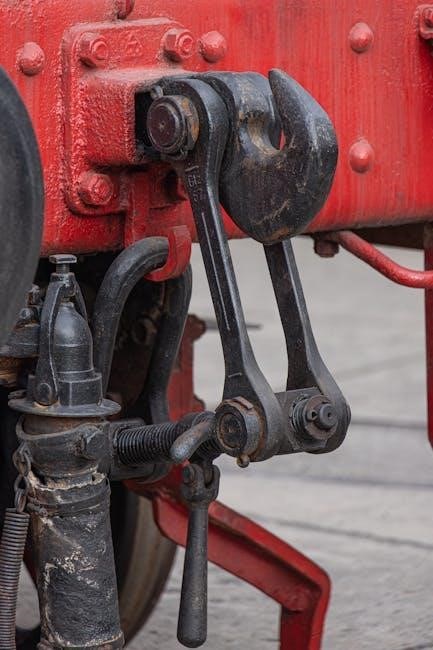Nut and bolt size chart pdf provides comprehensive information on sizes and types, including metric and US sizes, to help users make informed decisions when selecting fasteners for their projects and applications online.
Understanding the Importance of Size Charts
Size charts are essential tools for ensuring the correct fit and function of nuts and bolts in various applications, including construction, engineering, and manufacturing. A comprehensive size chart provides users with a detailed list of sizes, threads, and dimensions, enabling them to select the appropriate fasteners for their specific needs. By using a size chart, users can avoid errors and inaccuracies that can lead to safety hazards, equipment damage, and costly repairs. The importance of size charts is further emphasized by the fact that different industries and applications require specific types and sizes of fasteners, and a size chart helps users to navigate these complexities. With a size chart, users can quickly and easily identify the correct size and type of nut or bolt required for a particular job, saving time and reducing the risk of mistakes. This is particularly important in critical applications where safety and reliability are paramount.
Nut and Bolt Types and Sizes
Nut and bolt types and sizes vary, including metric and US sizes, with different threads and dimensions, used in various applications and industries, requiring specific selections.
Common Nut and Washer Types
Common nut and washer types include flat washers, lock washers, and split washers, which are used to distribute the load of a bolt or screw, preventing damage to surfaces and ensuring a secure hold.
The use of these washers can help prevent loosening of the bolt or screw over time, due to vibration or other external factors.
In addition to washers, there are also various types of nuts, such as hex nuts, wing nuts, and cap nuts, each with its own unique characteristics and applications.
The selection of the correct nut and washer type is crucial to ensure the integrity and safety of a structure or machine.
A nut and bolt size chart pdf can provide valuable information on the different types of nuts and washers, their sizes, and applications, helping users make informed decisions when selecting fasteners for their projects;
The chart can also include information on the materials used to manufacture these fasteners, such as stainless steel, bronze, or galvanized steel.
Overall, understanding the different types of nuts and washers is essential for any project that involves the use of fasteners.

Thread Gauges and Rulers
Thread gauges and rulers help measure thread pitches and sizes, ensuring accurate fastener selection and use online always.
Printable Thread Gauges for Coarse and Fine Threads
A printable thread gauge is a useful tool for distinguishing between coarse and fine threads, as well as various thread pitches used on metric bolts and machine screws. This gauge can be printed on paper and used to measure the thread size of a bolt or screw. The gauge includes markings for different thread sizes and pitches, allowing users to easily determine the correct thread size. By using a printable thread gauge, users can ensure that they are using the correct fasteners for their project, which is essential for safety and reliability. The gauge is also a convenient alternative to purchasing a physical thread gauge, and can be easily downloaded and printed from the internet. With a printable thread gauge, users can quickly and accurately measure thread sizes and pitches, making it an essential tool for any project that involves working with bolts and screws.

Torque Values and SAE Bolt and Nut Charts
SAE bolt and nut charts provide essential torque values for safe and reliable fastening, including Grade 5 and Grade 8 UNC or UNF thread torque values online always.
Grade 5 and Grade 8 UNC or UNF Thread Torque Values
The torque values for Grade 5 and Grade 8 UNC or UNF threads are crucial for ensuring the safety and reliability of fastened joints.
These values are typically provided in charts and tables, making it easy to determine the correct torque for a specific bolt or nut.
The Grade 5 torque values are generally lower than those for Grade 8, due to the differences in material strength and properties.
It is essential to consult the relevant charts and tables to determine the correct torque value for a specific application, as over-tightening or under-tightening can lead to joint failure.
The torque values are usually specified in units of foot-pounds or inch-pounds, and are dependent on the thread size and type.
By using the correct torque values, users can ensure that their fastened joints are safe, reliable, and meet the required specifications.
The charts and tables providing these values are widely available online, and can be easily accessed and referenced by users.
Overall, the use of correct torque values is critical for ensuring the integrity and safety of fastened joints, and should always be consulted when working with Grade 5 and Grade 8 UNC or UNF threads.
Proper torque application is essential for preventing damage and ensuring optimal performance.

Converting PDF to Spreadsheet for Cross Reference
Converting nut and bolt size chart pdf to spreadsheet enables easy cross referencing and data analysis using software tools online quickly.
Creating a Cross Reference for Nut or Bolt Sizes
Creating a cross reference for nut or bolt sizes involves organizing data from the nut and bolt size chart pdf into a usable format, using tools such as spreadsheets or databases to categorize and compare different sizes and types of fasteners. This process enables users to quickly identify compatible nuts and bolts for their projects, saving time and reducing errors. By utilizing software tools, users can easily sort and filter data, creating a customized cross reference that meets their specific needs. Additionally, this cross reference can be used to track inventory, monitor usage, and optimize fastener selection for future projects. With a well-organized cross reference, users can streamline their workflow, improve efficiency, and make informed decisions when selecting nuts and bolts for their applications, ultimately leading to better outcomes and reduced costs. This is especially useful for large-scale projects or industries that require precise and consistent fastener specifications.

Fastener Manufacturers and Distributors
Fastener manufacturers and distributors play a crucial role in providing high-quality nuts and bolts to various industries, offering a wide range of products, including stainless steel, bronze, and galvanized fasteners. These manufacturers and distributors, such as Pacific Coast Bolt Corporation, cater to diverse industries, including waterworks, construction, and domestic engineering. They provide a broad selection of fasteners, including nuts, bolts, screws, and anchors, in both metric and US sizes. Some manufacturers also offer customized flange kits, complete with flanges, studs, bolts, and nuts, to save customers time and effort. By partnering with reputable fastener manufacturers and distributors, businesses can ensure they receive reliable and durable products that meet their specific needs, enabling them to complete projects efficiently and effectively. Furthermore, these manufacturers and distributors often provide excellent customer service, technical support, and fast shipping, making them invaluable resources for industries that rely on high-quality fasteners. Their products are used in various applications, including construction, manufacturing, and engineering.
